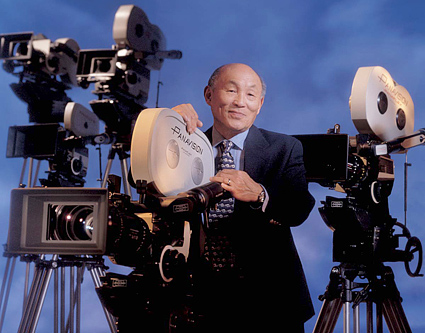Panavision Mourns the Loss of Takuo Miyagishima, One of its First Employees
WOODLAND HILLS, CALIF.: On Thursday, Aug. 4, Panavision lost one of its most valued employees, Tak Miyagishima, senior vice president of engineering.

“Tak’s technical and professional accomplishments are well documented, but equally important was his quiet and thoughtful leadership. The knowledge and instruction he shared with his colleagues will be a lasting legacy, and Tak will always be remembered and admired within Panavision,” said John Suh, president and CEO of Panavision.
Tak was one of the first employees hired in 1955 by Robert Gottschalk, founder of Panavision. From 1955-2011, Tak was involved in the design of many Panavision products that changed the way motion pictures were made, and most notably for the design of the Panavision optics which gained worldwide recognition during his tenure. Tak’s legacy is permanently imprinted on the company as the designer of the famous Panavision logo.
Originally hired as a draftsman, Tak quickly became the lead mechanical designer for Panavision’s growing line of optics. Tak’s first project was the mechanical design of the Super Panatar projection lens (1955), which allowed theatre owners to project multiple widescreen formats. Together with Walter Wallin, he designed the Micro Panatar Printing Lens (1955) used by film laboratories to produce film release prints from the numerous negative formats in use at that time. Following that was the 65mm Ultra and Super Panavision camera systems, including both studio and hand-held cameras and accompanying lenses.
Again with Wallin, he oversaw the design and development of the Panavision Panatar anamorphic lenses (1958). In 1960, Tak was instrumental in the design of the famous “Lawrence of Arabia” telephoto lens (the “mirage” lens) which captured the iconic shot of Omar Sharif emerging from the desert. In 1967, he was involved in the design of the blimp housing for the 35mm Mitchell camera, which became known as the Panavision Silent Reflex Camera.
For the next several decades, Tak focused his attention on the development of Panavision optics, which included several series of 35mm spherical and anamorphic lenses, culminating in the mechanical design of the ground-breaking Primo lens series. Tak’s involvement in technological advancement included all facets of Panavision’s engineering and development process.
His contributions were instrumental in setting many SMPTE standards, including the standard for 35mm 3-perf capture, which has been used by the television industry since the mid-1980s. Even though the majority of Tak’s career was during the film era, he continued to be actively involved as Panavision transitioned from film into digital capture.
During his long history at Panavision, Tak was a member of many organizations including the American Society of Cinematographers, SMPTE, the Academy’s Science and Technology Committee and the International Standards Organization. Tak also became one of the first three Academy Science Fellows, which is a new designation from the Academy for technologists who are retired but still have knowledge to share with the industry. In July, Tak was given a copy of his oral history, of which the only other two copies reside in the Academy’s Margaret Herrick Library and at the Pickford.
Tak has been presented with multiple awards over the course of his career, including a Fuji Gold Medal, an Emmy statuette and the ASC’s President Award (received with Al Mayer, Sr. of Panavision). In 1999, he received the John A. Bonner Medal of Commendation from the Academy, and in 2004 he was awarded the highest honor from the Academy, an Oscar statuette, the Gordon E. Sawyer Award, which is given to a select group of people for their contributions the industry.
Tak was an extremely devoted family man and a cherished friend. He is survived by his wife, three sons and three grandsons.
The professional video industry's #1 source for news, trends and product and tech information. Sign up below.
